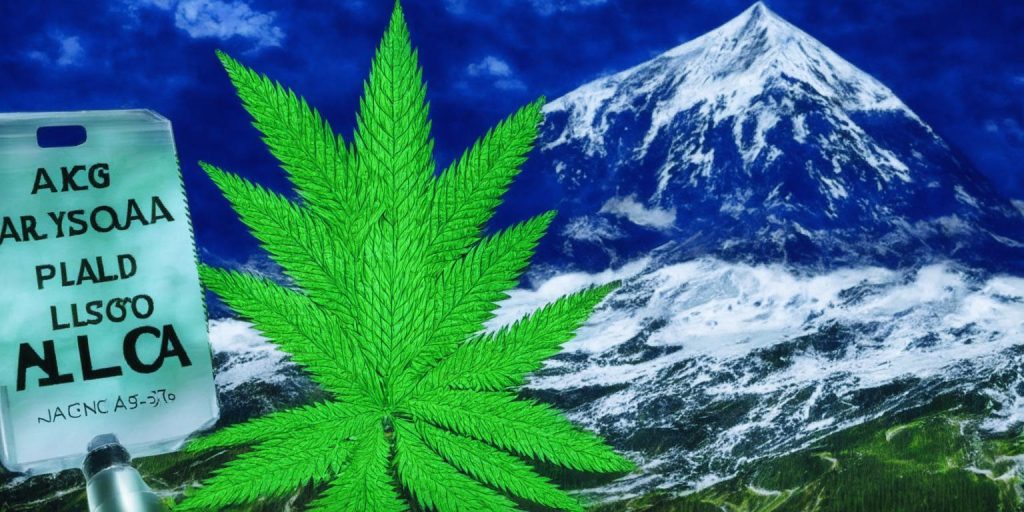
Welcome to the heart of the Last Frontier’s green rush! The cannabis industry in Alaska is a fascinating landscape where the rules of the game have been largely determined by voters. In this article, we will delve into the intricacies of marijuana laws in this picturesque state, shedding light on the legalities surrounding the use, possession, and distribution of cannabis. From the stunning vistas of Denali to the bustling city life of Anchorage, Alaska presents a unique setting for the burgeoning cannabis industry. So whether you’re a resident, a visitor, or simply curious about the evolving world of legal cannabis, stay tuned as we navigate through Alaska’s marijuana laws.
Navigating the Legal Landscape of Cannabis in Alaska
In the rugged expanse of Alaska, marijuana laws are as distinctive as the state itself. Possessing or distributing large amounts of cannabis can lead to a Class C felony charge, underscoring the importance of understanding these regulations. While Alaska has legalized marijuana for personal use, the nuances of its legislation demand careful attention. The Class C felony provision serves as a stern reminder of the potential legal consequences for non-compliance, making it essential to stay informed and abide by the state’s unique cannabis laws.
Delving into Alaskan State Marijuana Laws and Employment
Navigating through the complex terrain of state marijuana laws, Alaska presents a unique scenario for employers. While the personal use of cannabis is legal in Alaska, employers must still grapple with maintaining a drug-free workplace. It’s a delicate balance between respecting personal freedoms and ensuring workplace safety and productivity. The evolving nature of these laws demands that employers stay informed and adapt their policies accordingly to navigate this dynamic legal landscape.
Alaska’s Marijuana Laws: A Mosaic of Regulations
In Alaska, the third state to legalize recreational use, you can possess an ounce of marijuana without legal repercussions. This was a result of the Alaska Supreme Court’s landmark court ruling in Ravin v. State. However, exceeding this limit could lead to a Class C felony. It’s essential to familiarize oneself with these laws, as outlined by the Alaska Court of Appeals and the Alaska Constitution.
References
Alaska’s state marijuana laws were determined by voters and are enforced by agencies like Health and Social Services.
Additional Resources
In Alaska, the third state to legalize recreational use, possessing more than an ounce of marijuana can lead to a Class A misdemeanor punishable by law. This change was a result of a landmark court ruling, Ravin v. State, by the Alaska Supreme Court. The Alaska Court of Appeals and the Alaska Constitution also provide pertinent information about these laws, including the conditions under which possession becomes a Class C felony.
Secondhand Smoke
In Alaska, exposing others to secondhand marijuana smoke can lead to serious penalties. Possessing more than an ounce of marijuana is a Class A misdemeanor punishable by up to one year in prison and a fine. If the amount exceeds three ounces, it’s considered a Class C felony punishable by up to five years’ imprisonment and a fine. These laws originated from the legalization of recreational marijuana in Alaska on February 24, 2015. For health-related information, consult the Alaska Department of Health.
Medical Marijuana
Medical marijuana is legal in Alaska. However, possession of more than an ounce can lead to a Class A misdemeanor punishable by up to a year of imprisonment and a fine. If the amount exceeds three ounces, it’s considered a Class C felony punishable by up to five years’ imprisonment. It’s essential to remember that these laws were implemented in Alaska on February 24, 2015.
Business
The cannabis industry in Alaska has evolved significantly over the years. Initially, businesses faced numerous challenges due to the legal gray area surrounding marijuana. However, with the passing of time and changes in the law, these enterprises have begun to flourish. Today, Alaska boasts a thriving cannabis industry, with numerous retail shops, cultivation facilities, and product manufacturing businesses. These businesses contribute significantly to the state’s economy, creating jobs and generating tax revenue. Yet, it’s important for those involved in this industry to stay informed about the ever-changing laws and regulations to ensure compliance and sustainability.
Decriminalization (1975)
The journey towards decriminalization started with a landmark court ruling, Ravin v. State, by the Alaska Supreme Court in 1975. This ruling led to the eventual legalization of recreational use of marijuana. One notable cannabis retail shop that emerged during this era is Dankorage, located in the Anchorage Spenard neighborhood. Founded by Bill Roth, Dankorage has become a symbol of the changing attitudes towards cannabis in Alaska. The laws and regulations today are shaped by the decisions made by the Alaska Court of Appeals and interpretations of the Alaska Constitution.
Conclusion
In conclusion, “Get the Facts: A Comprehensive Visitor’s Guide to Legal Cannabis, Alaska Laws, and Penalties” provides a detailed overview of cannabis laws in Alaska, as well as the penalties associated with breaking these laws. It covers both medical and non-medical marijuana use, cultivation restrictions, and the rights of residents concerning cannabis possession. The guide also highlights the importance of local laws, as cities and communities in Alaska have the authority to enact stricter regulations. For visitors or those new to the state, this guide serves as an essential resource for understanding the legal landscape of cannabis in Alaska, emphasizing responsible and lawful use.



